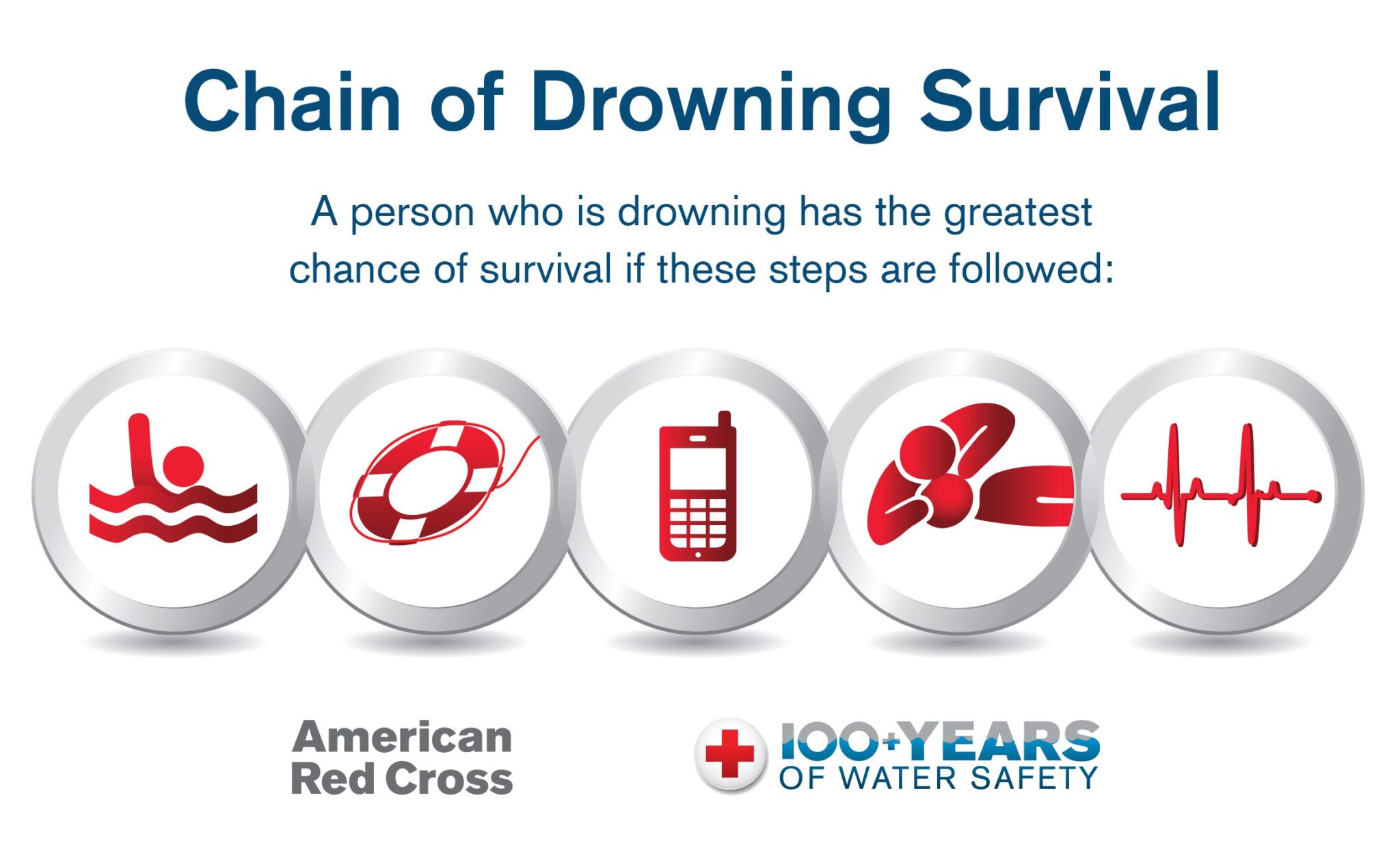

Source: American Red Cross
Drowning is the process of experiencing respiratory impairment from submersion or immersion in liquid. It is a leading cause of injury-related death in children.
Over 1,500 children and teens die every year in the U.S. from drowning. In Washington state, an average of 25 children and teens drown every year. Most drownings occur while swimming, boating, or just playing in or near water.
Every year in the U.S., there is an estimated total of:
The American Academy of Pediatrics (AAP) has also updated its prior Drowning Guidelines Report with NEW information and research.
Practice safety when in or near water. It has been estimated that most drownings are preventable. The ability to avoid a drowning contrasts with the high rates of poor outcomes following these type of incidents. Drowning requires multiple layers of protection. To be effective, drowning prevention must be used by individuals near, on or around the water, and those who supervise or care for others in water settings.
Recommended actions:
Call for help. If you recognize a person is in distress while in or near the water, it is important to send someone to call for help. Delays in activating rescue and emergency medical services (EMS) increases the risk of fatal drownings.
Ways to recognize if a person is at risk of drowning:
Recommended actions:
Prevent submersion. After recognizing a person is in distress and sending someone to call for help, the next priority is to interrupt the drowning process by providing flotation. The safest course of action is to NOT enter the water. Instead, it is important to reach out with, throw, or drop the flotation to the person in distress.
Recommended actions to help a drowning person:
Recommended actions to help yourself:
When safe to do so, it is best to remove the drowning person from water in order to provide a definitive end to the drowning process. In order to mitigate risks, a rescuer MUST bring a source of flotation to assist in the rescue.
Recommended actions:
Seek immediate medical attention, if required. Initiation of basic life support may occur while the drowning person is still in water if the rescuer is trained and can safely provide in-water cardiopulmonary resuscitation (CPR). As soon the drowning person is removed from the water, the rescuer(s) must recognize the severity of the person’s condition—especially if there is a life-threatening situation.
Recommended actions if the person rescued is NOT breathing:
Recommended actions if the person rescued IS breathing:
For more information on drowning prevention and water safety resources, visit: hiprc.org/drowning-prevention.